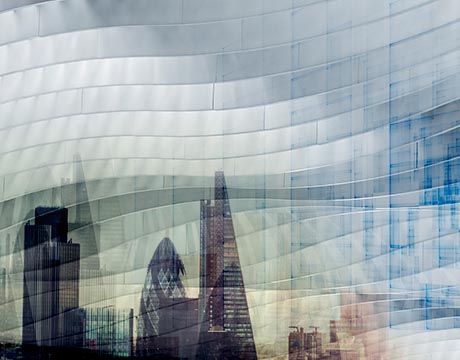Warping Material Strengthens Curved Structures
Warping Material Strengthens Curved Structures


Buildings have traditionally been made of flat planes and simple curves. But a team of Brooklyn-based architects have demonstrated that warping material across two dimensions can provide enough strength to cut down on material use.
Minima-Maxima was an installation at the World Expo 2017 in Astana, Kazakhstan, made from complex, three-ply, curved aluminum sheets supporting one another, reaching 43 feet into the sky. The sheets are made of components called structural stripes that were invented by French architect Marc Fornes, using a digital fabrication method in which thousands of sub-elements are fastened together to form an ultrathin continuous surface.
The surface is only 6-mm thick, about the same as three stacked nickels. An egg at the same scale would have a shell some 2 inches thick.
“The entire structure relies on the fact that it is curved into two directions, not on the material,” said Fornes, from his THEVERYMANY studio in Brooklyn.
Computer-assisted design tools enabled architects to explore more complex curves. But in 2004, when Fornes graduated with a master’s in architecture and urbanism from the Design Research Lab of the Architectural Association in London, architects were still having trouble designing curved structures. Fornes taught himself coding and developed the stripes as a way to enable this structural process. The composite stripes are positioned perpendicularly from one another, creating an anistropic composite material (its structural properties depend on direction) from an isotropic material, such as aluminum (the properties are mostly the same in all directions).
Minima?|?Maxima rests on a pleated base that takes the dead load and rigidifies the edge. The aluminum sandwich is made of three flat layers—two white enveloping one pink. Because the layers support each other as they assume curvature and gain height, no columns or temporary scaffolding are needed.
The same dual curvature that provides its structural integrity splits, merges, and recombines, incorporating elements that enable visitors to walk through the structure.
“People are used to living in a box,” Fornes said. “We might have seen those curved elements in a biology book or a marine environment, but we never entered one. I think people engage it because it is very organic, and then there is the curiosity of how it is actually standing. And it is white, which makes it very abstract and surreal.”
The 10-architect studio is working on other projects, from an eight-floor façade to pavilions to parking lots. For his part, Fornes is still toying with how to build with curves.
“It’s more than a question for me,” Fornes said. “It’s a fascination.”
The entire structure relies on the fact that it is curved into two directions, not on the material. Marc Fornes, Principal, THEVERYMANY





